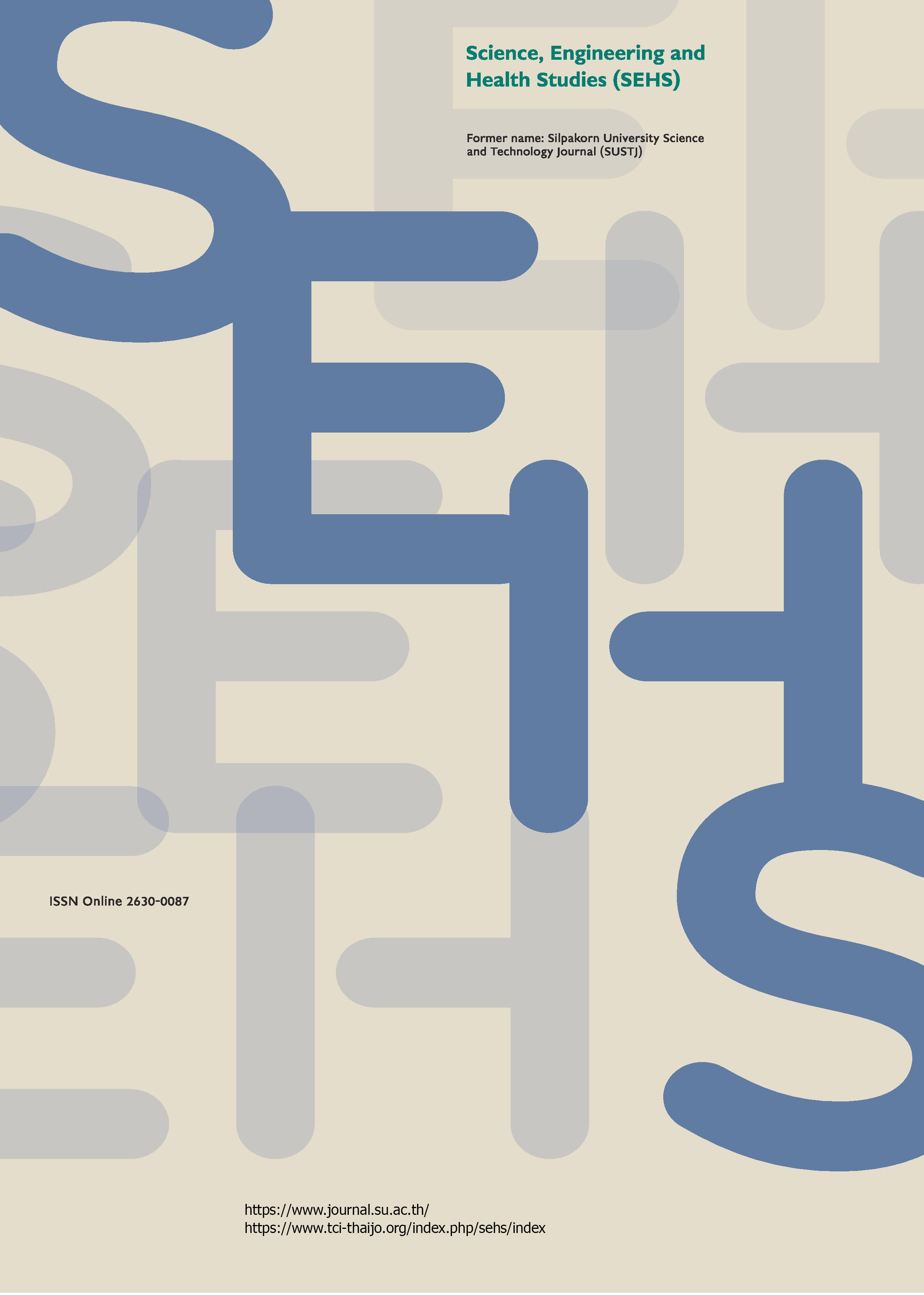Pain and psychological distress in chronic temporomandibular disorder patients: A systematic review
Main Article Content
Abstract
Temporomandibular disorder (TMD) may cause poor pain-related adjustment, which can lead to psychological distress, which in turn may affect quality of life and amplify and continue the pain cycle. This study aimed to determine the association between pain and psychological distress among chronic TMD patients. Electronic databases (i.e. MeSH, ScienceDirect, Google Scholar and EBSCO) available at the Universiti Teknologi MARA were used in the search strategy, and the PRISMA guideline was employed to report the search strategy. Inclusion was reserved to observational studies that evaluated psychological profiles and pain severity with validated outcome measures, and quality assessment was performed using the AXIS tool. A total of 190 studies were obtained via the search strategy; however, only 10 studies were eligible for review. Findings showed that pain severity was positively correlated with degree of psychological distress. Pain levels varied from mild to severe, and depression, stress, anxiety and somatization degrees varied from moderate to severe. In conclusion, pain severity influenced the degree of psychological distress among chronic TMD patients.
Downloads
Article Details

This work is licensed under a Creative Commons Attribution-NonCommercial-NoDerivatives 4.0 International License.
References
Berger, M., Oleszek-Listopad, J., Marczak, M., and Szymanska, J. (2015). Psychological aspects of temporomandibular disorders – literature review. Current Issues in Pharmacy and Medical Sciences, 28(1), 55-59.
Canales, G. D., Guarda-Nardini, L., Rizzatti-Barbosa, C. M., Conti, P. C., and Manfredini, D. (2019). Distribution of depression, somatization and pain-related impairment in patients with chronic temporomandibular disorders. Journal of Applied Oral Science, 27, e20180210.
Canales, G. D., Câmara-Souza, M. B., Muñoz Lora, V. R., Guarda-Nardini, L., Conti, P. C., Rodrigues Garcia, R. M., Del Bel Cury, A. A., and Manfredini, D. (2018). Prevalence of psychosocial impairment in temporomandibular disorder patients: A systematic review. Journal of Oral Rehabilitation, 45(11), 881-889.
Downes, M. J., Brennan, M. L., Williams, H. C., and Dean, R. S. (2016). Development of a critical appraisal tool to assess the quality of cross-sectional studies (AXIS). BMJ Open, 6, e011458.
Fillingim, R. B., Ohrbach, R., Greenspan, J. D., Knott, C., Diatchenko, L., Dubner, R., and Maixner, W. (2013). Psychological factors associated with development of TMD: The OPPERA prospective cohort study. The Journal of Pain, 14(12), T75-T90.
Ferrando, M., Andreu, Y., José Galdón, M., Durá, E., Poveda, R., and Vincente Bagán, J. (2004). Psychological variables and temporomandibular disorders: Distress, coping, and personality. Oral Surgery, Oral Medicine, Oral Pathology, Oral Radiology, and Endodontology, 98(2), 153-160.
Goesling, J., Clauw, D. J., and Hassett, A. L. (2013). Pain and depression: An integrative review of neurobiological and psychological factors. Current Psychiatry Reports, 15(12), 421.
Guarda-Nardini, L., Pavan, C., Arveda, N., Ferronato, G., and Manfredini, D. (2012). Psychometric features of temporomandibular disorders patients in relation to pain diffusion, location, intensity and duration. Journal of Oral Rehabilitation, 39(10), 737-743.
Halmova, K., Holly, D., and Stanko, P. (2017). The influence of cranio-cervical rehabilitation in patients with myofascial temporomandibular pain disorders. Bratislava Medical Journal, 118(11), 710-713.
Jasim, H., Louca, S., Christidis, N., and Ernberg, M. (2013). Salivary cortisol and psychological factors in women with chronic and acute oro-facial pain. Journal of Oral Rehabilitation, 41(2), 122-132.
Jo, K. B., Lee, Y. J., Lee, I. G., Lee, S. C., Park, J. Y., and Ahn, R. S. (2016). Association of pain intensity, pain-related disability, and depression with hypothalamus–pituitary–adrenal axis function in female patients with chronic temporomandibular disorders. Psychoneuroendocrinology, 69, 106-115.
Lei, J., Fu, J., Yap, A. U., and Fu, K. (2016). Temporomandibular disorders symptoms in Asian adolescents and their association with sleep quality and psychological distress. The Journal of Craniomandibular & Sleep Practice, 34(4), 242-249.
Lorduy, K. M., Liegey-Dougall, A., Haggard, R., Sanders, C. N., and Gatchel, R. J. (2013). The Prevalence of comorbid symptoms of central sensitization syndrome among three different groups of temporomandibular disorder patients. Pain Practice, 13(8), 604-613.
Madland, G., Feinmann, C., and Newman, S. (2000). Factors associated with anxiety and depression in facial arthromyalgia. Pain, 84(2), 225-232.
Manfredini, D., Borella, L., Favero, L., Ferronato, G., and Guarda-Nardini, L. (2010a). Chronic pain severity and depression/somatization levels in TMD patients. The International Journal of Prosthodontics, 23(6), 529-534.
Manfredini, D., Marini, M., Pavan, C., Pavan, L., and Guarda-nardini, L. (2009). Psychosocial profiles of painful TMD patients. Journal of Oral Rehabilitation, 36(3), 193-198.
Manfredini, D., Winocur, E., Ahlberg, J., Guarda-Nardini, L., and Lobbezoo, F. (2010b). Psychosocial impairment in temporomandibular disorders patients. RDC/TMD axis II findings from a multicentre study. Journal of Dentistry, 38(10), 765-772.
Monteiro, D. R., Zuim, P. R., Pesqueira, A. A., Ribeiro, P. D., and Garcia, A. R. (2011). Relationship between anxiety and chronic orofacial pain of temporomandibular disorder in a group of university students. Journal of Prosthodontic Research, 55(3), 154-158.
Ohrbach, R., and Durham, J. (2017). Biopsychosocial aspects of orofacial pain. Contemporary Oral Medicine, 1-21.
Patil, D., Dheer, D., Puri, G., Konidena, A., Dixit, A., and Gupta, R. (2016). Psychological appraisal in temporomandibular disorders: A cross-sectional study. Indian Journal of Pain, 30(1), 13-18.
Pesqueira, A. A., Zuim, R. J., Monteiro, D. R., Prado Ribeiro, P. D., and Garcia, A. R. (2010). Relationship between psychological factors and symptoms of TMD in university undergraduate students. Acta odontologica latinoamericana, 23(3), 180-187.
Su, N., Lobbezoo, F., Van Wijk, A., Van der Heijden, G. J., and Visscher, C. M. (2017). Associations of pain intensity and pain-related disability with psychological and socio-demographic factors in patients with temporomandibular disorders: a cross-sectional study at a specialised dental clinic. Journal of Oral Rehabilitation, 44(3), 187-196.
Sruthi, S., Jimsha, V. K., Srinivasan, S. V., and Daniel, J. M. (2018). Prevalence of depression, anxiety and stress in chronic temporomandibular joint disorders patients. Journal of Depression and Anxiety, 7(4), 1000322.
Staud, R. (2011). Evidence for shared pain mechanisms in osteoarthritis, low back pain, and fibromyalgia. Current Rheumatology Reports, 13(6), 513-520.
Tsai, C., Chou, S., Gale, E. N., & Mccall, W. D. (2002). Human masticatory muscle activity and jaw position under experimental stress. Journal of Oral Rehabilitation, 29(1), 44-51.


